
A puzzle by Joseph Horton, from MIT Technology Review, January-February 1999:
If the sun takes two minutes to set, what angle does it subtend from Earth?

A puzzle by Joseph Horton, from MIT Technology Review, January-February 1999:
If the sun takes two minutes to set, what angle does it subtend from Earth?
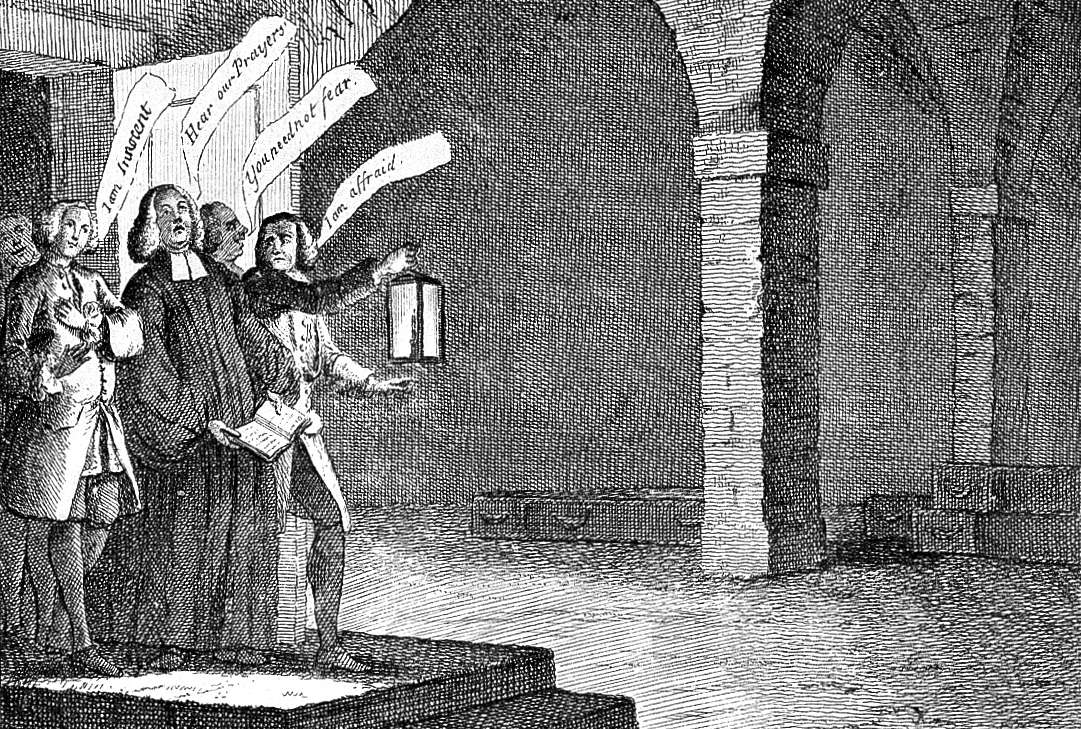
In 1759, ghostly rappings started up in the house of a parish clerk in London. In the months that followed they would incite a scandal against one man, an accusation from beyond the grave. In this week’s episode of the Futility Closet podcast we’ll tell the story of the Cock Lane ghost, an enduring portrait of superstition and justice.
We’ll also see what you can get hit with at a sporting event and puzzle over some portentous soccer fields.
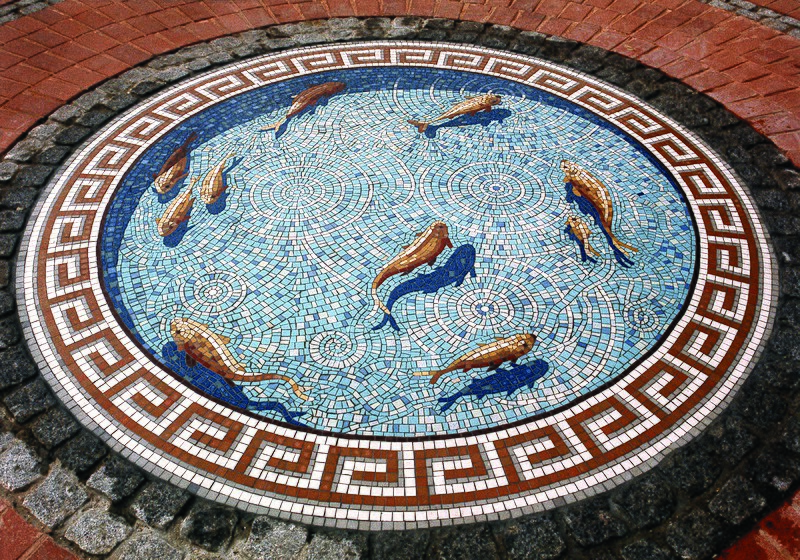
hortulan
adj. of or belonging to a garden
micacious
adj. sparkling, shining
bumfuzzle
v. to astound or bewilder
asomatous
adj. having no material body
Artist Gary Drostle designed this trompe l’oeil mosaic for a public garden in Croydon in 1996.
He calls it “the ideal low maintenance fishpond.”
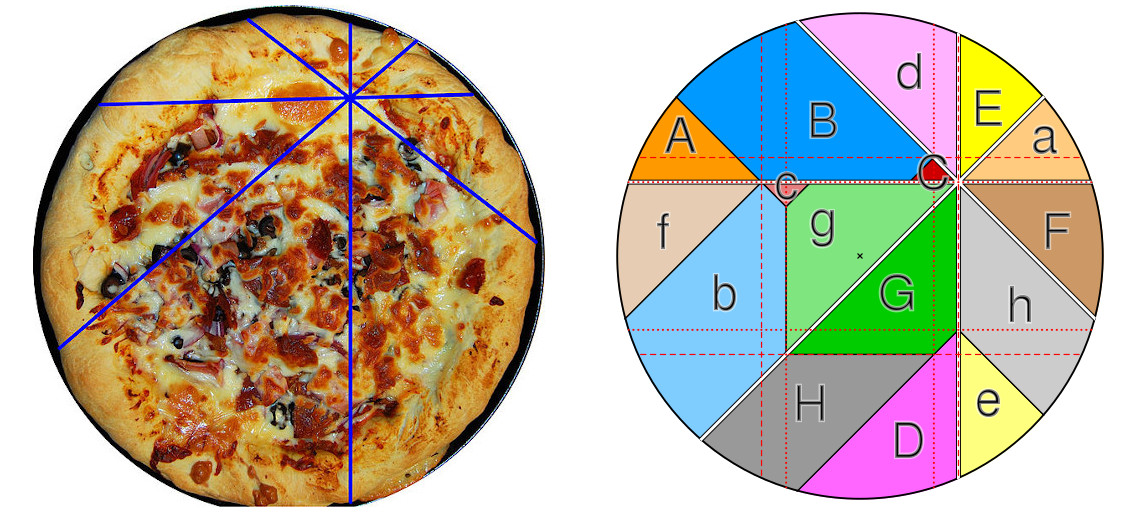
If you’re sharing a pizza with another person, there’s no need to cut it into precisely equal slices. Make four cuts at equal angles through an arbitrary point and take alternate slices, and you’ll both get the same amount of pizza.
Larry Carter and Stan Wagon came up with this “proof without words”: Each piece in an odd-numbered sector corresponds to a congruent piece in an even-numbered sector, and vice versa.
Also: If a pizza has thickness a and radius z, then its volume is pi z z a.
(Larry Carter and Stan Wagon, “Proof Without Words: Fair Allocation of a Pizza,” Mathematics Magazine 67:4 [October 1994], 267-267.)
Sculptor Anna Coleman Ladd found an unusual application for her artistry during World War I, creating prostheses for the dramatic injuries produced by machine guns and heavy artillery. After reading about artist Francis Derwent Wood’s “Tin Noses Shop” in London, she moved to London and opened a “Studio for Portrait-Masks.”
Her copper and silver masks, 1/32″ thick and weighing 4-9 ounces, were founded on facial casts and painted to match the precise skin tone of each patient. Held in place by eyeglasses, many included realistic mustaches, eyebrows, and eyelashes. By the end of 1919 Ladd had created 185 of them, charging $18 for each and donating her own services. The Red Cross called them “miracles,” and in 1932 France made her a Chevalier of the Legion of Honour.
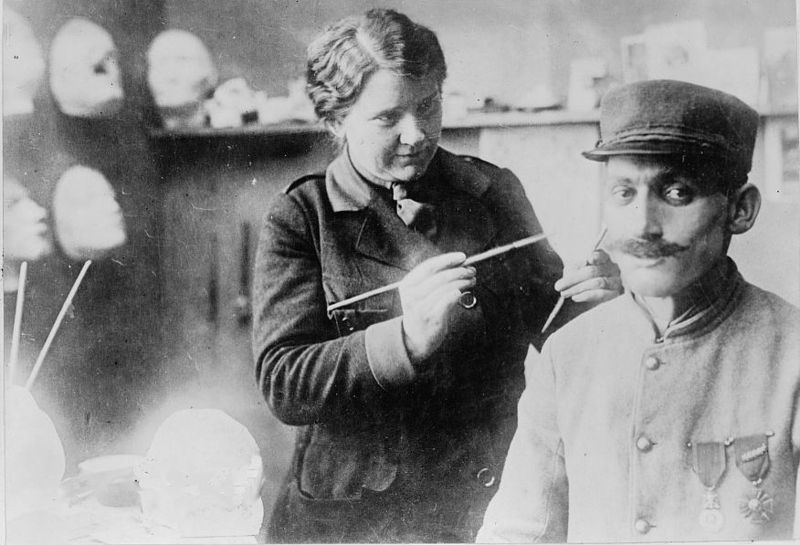
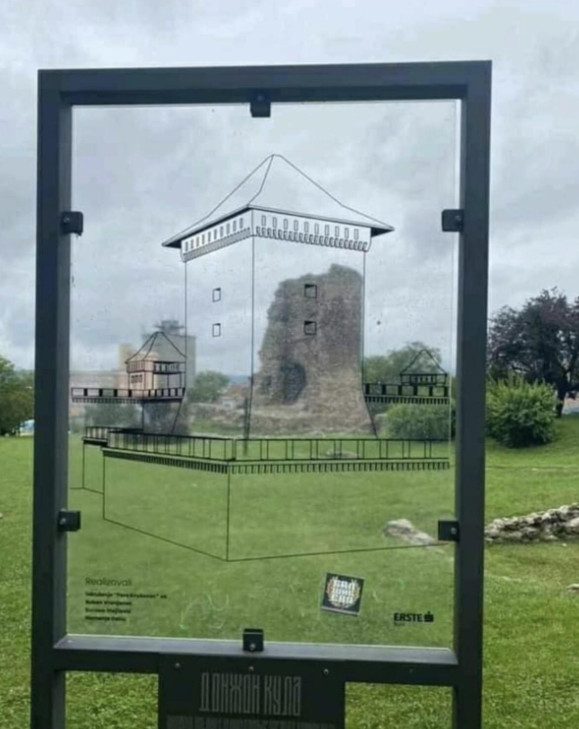
On the grounds of the Fortress of Kruševac, in Serbia, is a “window to the past” that depicts the donjon tower as it appeared in its medieval heyday. At its height it served as the entrance to a medieval fortified town, the seat of Moravian Serbia.

High Wycombe, a town of furniture makers, historically celebrated important visitors with arches of chairs. The most famous marked the arrival of Prince Edward in 1880; three years earlier a similar arch had arrested Queen Victoria on her way from Windsor Castle to Hughenden to visit Lord Beaconsfield.
“It was made up of chairs of all kinds, and bore the words, ‘Long Live the Queen,'” read the Annual Register. “Her Majesty’s attention was specially attracted by this curious structure, and the Royal carriage was stopped that its occupants might have a better view.”
In a 1752 letter to Euler, Christian Goldbach suggested that every odd integer is the sum of a prime and twice a square. (At the time, 1 was considered a prime number.)
Only two exceptions, 5777 and 5993, have ever been found.

One day Stan Laurel visited a stationery store.
The clerk seemed to recognize him.
“Say,” he said. “Aren’t you –”
Laurel said, “Oliver Hardy.”
“Right,” said the clerk. “Say, whatever happened to Laurel?”
Laurel said, “He went balmy.”
A pleasing observation by W.V. Quine from 1988:
Fermat’s Last Theorem can be vividly stated in terms of sorting objects into a row of bins, some of which are red, some blue, and the rest unpainted. The theorem amounts to saying that when there are more than two objects, the following statement is never true:
Statement. The number of ways of sorting them that shun both colors is equal to the number of ways that shun neither.
He explains this, very concisely, here.
(W.V. Quine, “Fermat’s Last Theorem in Combinatorial Form,” American Mathematical Monthly 95:7 [September 1988], 636.)